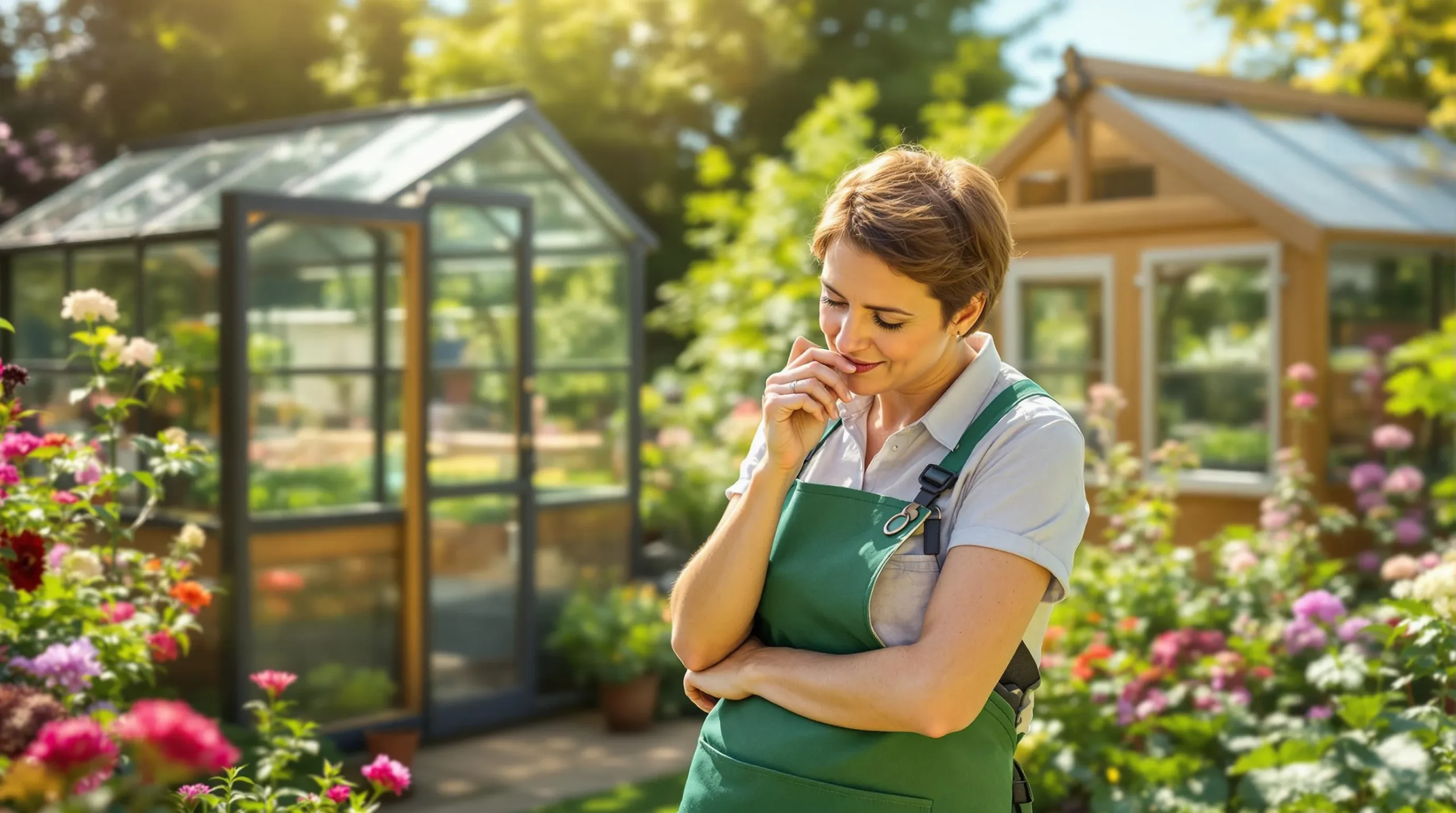
How to Choose Your First Greenhouse: A Complete Beginner’s Guide for 2025
Learn how to choose your perfect first greenhouse with our expert guide. Discover size, materials, and features to extend your growing season by 2-3 months.
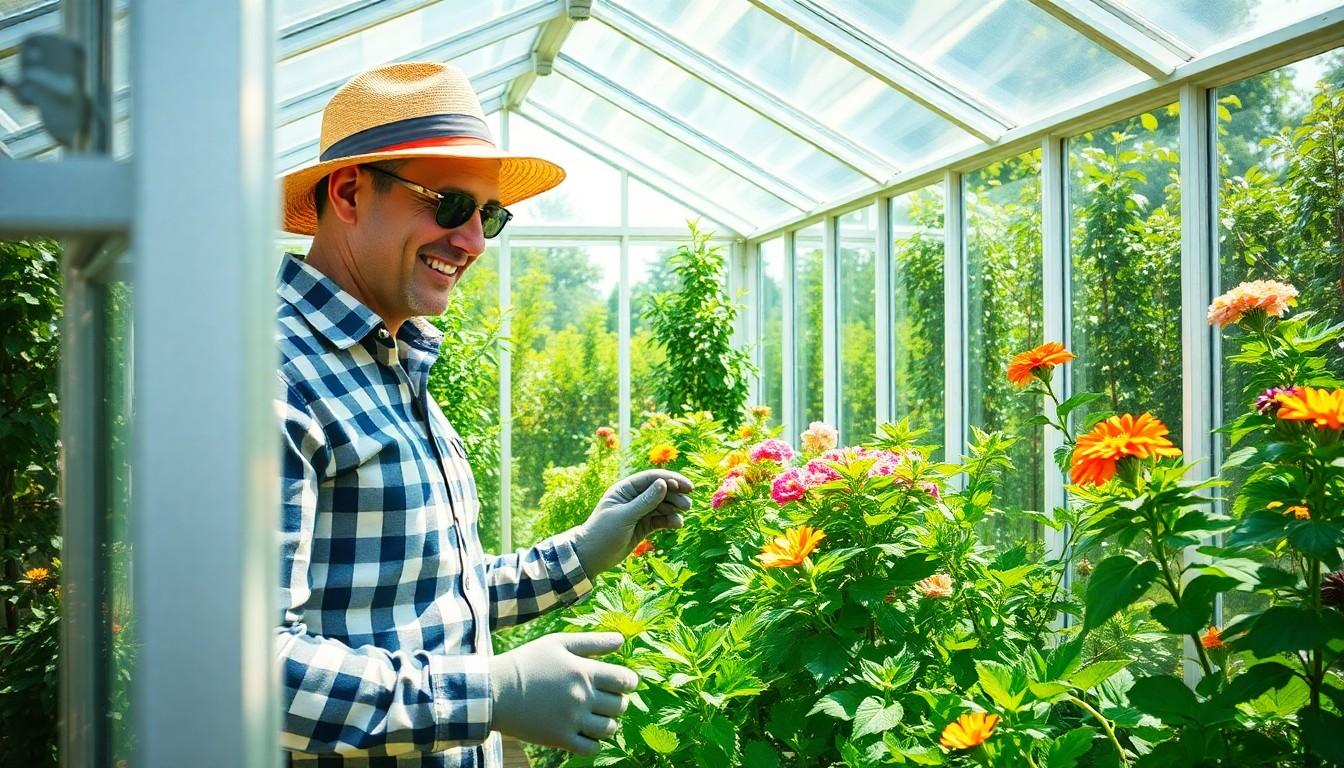
When it comes to protecting your precious plants, UV radiation poses a significant challenge for greenhouse gardeners. Polycarbonate greenhouses have revolutionised plant protection by offering outstanding UV resistance, ensuring your growing space remains safe and productive year-round.
You’ll find that polycarbonate panels come with specialised UV-resistant coatings that shield both your plants and the greenhouse structure from harmful rays. This innovative feature prevents the common problems of yellowing, brittleness, and fading that often plague traditional greenhouse materials. What’s more, the material’s exceptional heat retention properties create an energy-efficient environment that maintains consistent temperatures while reducing your heating costs.
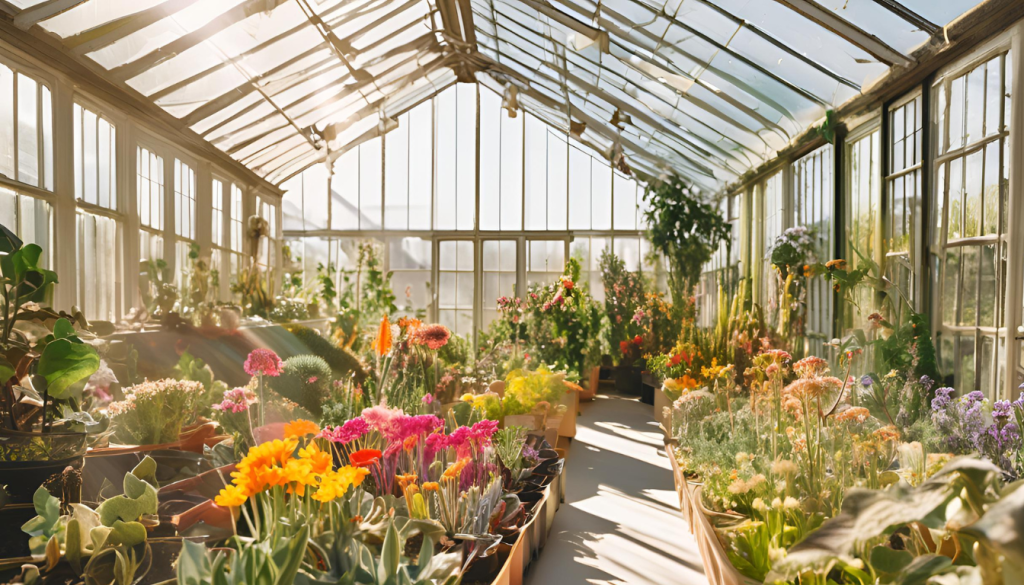
Polycarbonate greenhouses provide superior UV protection through specialised panels that block up to 100% of harmful ultraviolet radiation. These panels create an optimal growing environment while safeguarding both plants and gardeners.
UV radiation impacts plant development in three primary ways:
| UV Impact | Effect on Plants | Protection Level Needed |
|---|---|---|
| UV-A (315-400nm) | Leaf yellowing | 85-90% blockage |
| UV-B (280-315nm) | DNA damage | 95-98% blockage |
| UV-C (100-280nm) | Cell death | 100% blockage |
Polycarbonate greenhouse panels offer two distinct protection mechanisms:
Using UV-protected polycarbonate panels results in:
The panels’ UV-filtering properties remain effective for 10-15 years with proper maintenance, providing consistent protection throughout the greenhouse structure’s lifespan.
UV-protected polycarbonate greenhouses create optimal growing environments through specialised light filtering and protection. These structures combine durability with advanced UV-blocking technology to safeguard plants and equipment.
UV-protected polycarbonate panels filter 88% of light transmission while blocking harmful UV radiation. The filtered light distribution promotes:
| Durability Features | Protection Level |
|---|---|
| Impact Resistance | Virtually Unbreakable |
| UV Protection Duration | 10-15 Years |
| Weather Resistance | All Climate Conditions |
Polycarbonate greenhouse panels integrate UV protection through a specialised co-extruded layer that blocks harmful radiation. This protective mechanism filters out 99% of UV rays while maintaining optimal light transmission for plant growth.
The UV-blocking system in polycarbonate greenhouse panels operates through two primary components:
| UV Protection Features | Performance Metrics |
|---|---|
| UV Radiation Blocked | >99% |
| Light Transmission | 88% |
| Protected Spectrum | UV-A, UV-B, UV-C |
| Durability Aspect | Expected Performance |
|---|---|
| Lifespan | 10-15 years |
| Impact Resistance | 200x stronger than glass |
| Temperature Range | -40°C to 120°C |
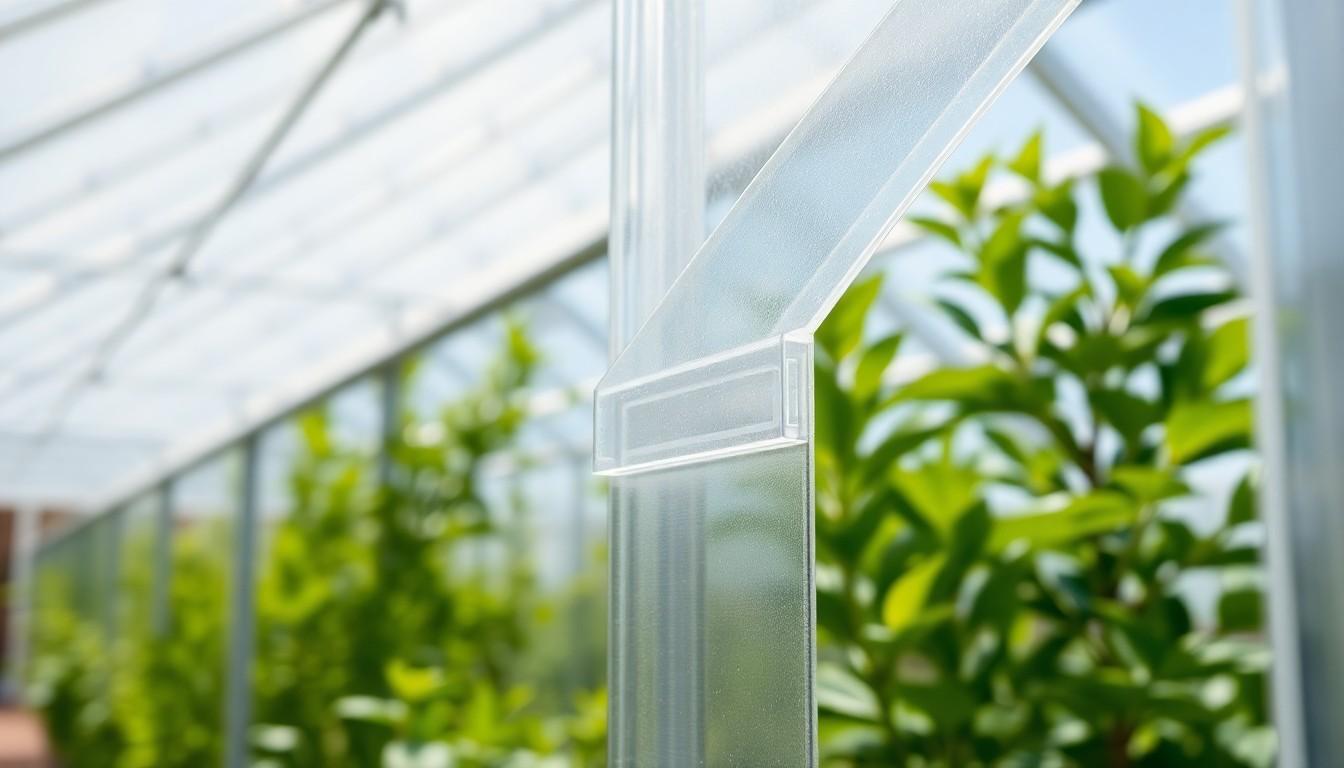
Polycarbonate greenhouse sheets include UV protection layers that block damaging ultraviolet radiation. A specialised 50-micron UV protective coating ensures optimal performance and longevity.
The correct installation of polycarbonate sheets maximises their UV protection capabilities:
Polycarbonate greenhouse panels offer distinct UV protection features based on their structure and protective coatings. Let’s examine the key differences between panel types and protection grades.
Single-wall polycarbonate panels measure 0.7mm thick with 90% light transmission and crystal-clear visibility. Twin-wall panels are 4mm thick with enhanced insulation properties for heat retention in winter months. The twin-wall structure creates diffused light distribution which prevents plant scorching on sunny days. Both panel types include 100% UV protection to prevent discoloration fracturing or shattering.
The UV protection layer varies in thickness performance:
| Protection Grade | UV Blocking | Light Transmission | Lifespan |
|---|---|---|---|
| Standard | 95% | 90% | 5-7 years |
| Enhanced | 97% | 89% | 8-10 years |
| Premium | 99% | 88% | 10+ years |
The UV protective coating requires proper installation with the treated surface facing outward for maximum effectiveness. Regular maintenance through quarterly cleaning enhances longevity.
Polycarbonate greenhouses with built-in UV protection provide a complete solution for healthy plant growth. This advanced technology shields plants from harmful radiation while also increasing the lifespan of your greenhouse.
Choosing the right panels and keeping them well-maintained helps create the ideal environment for strong, thriving plants and higher yields. With their durability, energy efficiency, and UV-blocking properties, polycarbonate greenhouses are a smart choice for both beginners and experienced gardeners.
For the best results, ensure proper installation and regular upkeep. A well-maintained UV-protected greenhouse will support successful growing seasons for years to come.
Polycarbonate greenhouses can block up to 100% of harmful UV radiation through their specialised protective coating. The panels filter 99% of UV rays whilst maintaining 88% light transmission, creating an optimal growing environment for plants. This level of protection remains effective for 10-15 years with proper maintenance.
With proper maintenance, the UV-filtering properties of polycarbonate panels remain effective for 10-15 years. The co-extruded protective layer resists environmental degradation and maintains its structural integrity throughout this period, ensuring consistent protection for your greenhouse and plants.
Quarterly cleaning, annual seal checks, and biannual inspections of fixings should be done regularly. Avoid using harsh household cleaners like Windex or 409, as these can damage the protective coating. Use only recommended cleaning products and soft cloths to preserve the UV protection effectiveness.
Modern polycarbonate panels with UV protection do not typically yellow over time. The specialised UV-resistant coating prevents discolouration and maintains clarity throughout their lifespan. However, panels without proper UV protection or those exposed to harsh chemicals may experience yellowing.
Polycarbonate panels come in three protection grades: standard, enhanced, and premium. Each grade offers different levels of UV blocking and light transmission. Twin-wall panels (4mm thick) provide better insulation and diffused light distribution, while single-wall panels (0.7mm thick) offer 90% light transmission.
UV protection in polycarbonate greenhouses leads to enhanced photosynthesis rates, stronger root systems, and healthier foliage. By blocking harmful radiation while maintaining optimal light transmission, plants experience reduced stress, improved growth rates, and better harvest yields.

Learn how to choose your perfect first greenhouse with our expert guide. Discover size, materials, and features to extend your growing season by 2-3 months.
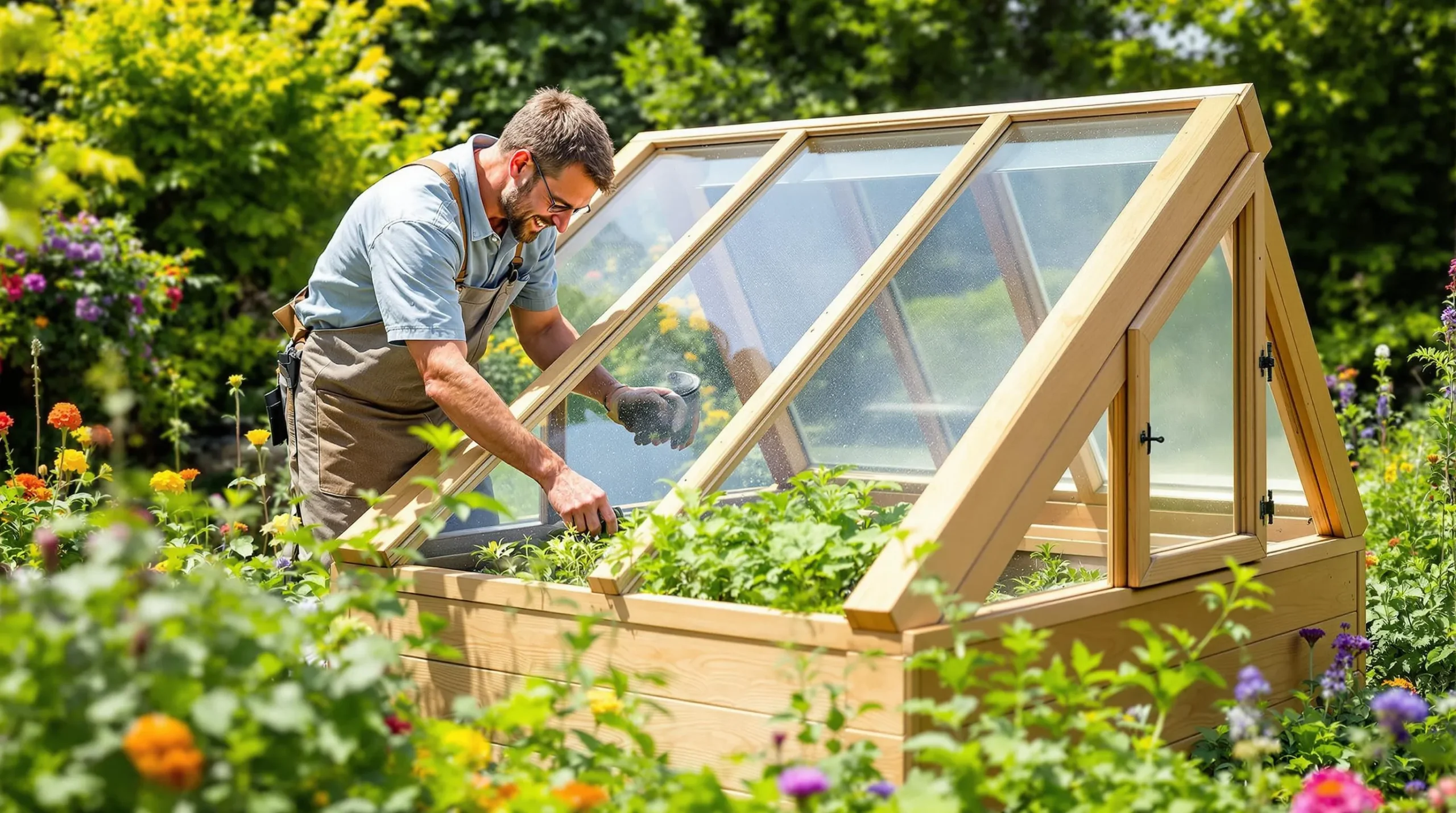
Learn how to make a cold frame to extend your growing season, protect plants in winter, and grow seedlings all year. Simple, cost-effective, and DIY-friendly!